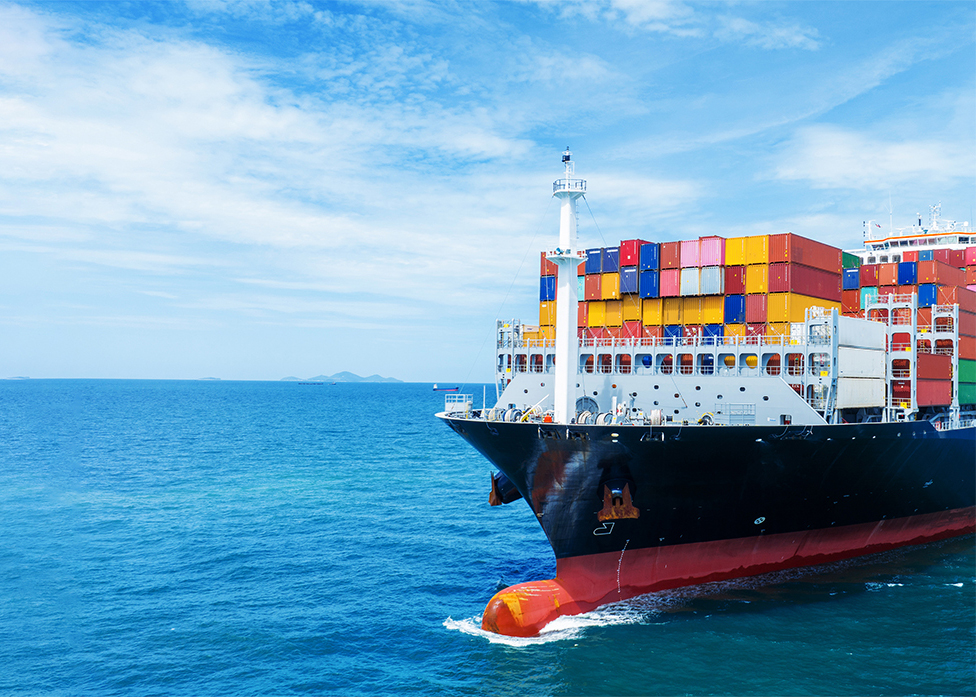When is the first CII rating assigned?
The first annual CII rating will be assigned in 2024, based on verified data from the 2023 calendar year.

All cargo and cruise ships of 5000 Gross Tonnage and above that are already subjected to the IMO’s Data Collection System should comply with the CII rating scheme. CII is a new measure adopted by the IMO to meet its objective “to reduce CO2 emissions per transport work, as an average across international shipping, by at least 40% by 2030, pursuing efforts towards 70% by 2050, compared to 2008.”. Normec Verifavia, helps you to comply with CII.
Resolution MEPC.328(76) adopted at MEPC 76 in June 2021, entered into force on 1 November 2022 and introduced amendments to MARPOL Annex VI with new requirements for:
CII is the operational carbon intensity Indicator expressed in grams of CO2 per deadweight-nautical mile and it is a measure of vessel efficiency of CO2 emitted in transporting cargo or passengers. The CII and CII rating scheme will apply to all Cargo and Cruise ships of 5000 gross tonnage and above, that is, the ships that are already subject to the requirements of the IMO Data Collection System (IMO DCS).
The annual operational CII achieved or attained CII will be required to be documented and verified against the required annual operational CII. This will enable the Flag state to determine the operational CII rating, the rating will be given on a scale from A to E, A being the better-performing vessels.
Since 2019 it has been mandatory for Ship Operators to fulfil the requirements of IMO’s data collection system. In this process, they monitor Fuel consumption, Hours underway and Distance travelled within a calendar year, this data is then verified by an approved Verifier, they will additionally have to calculate the attained CII of each ship. Based on the attained and required CII, a CII rating will be given to a ship.
The required CII is calculated using 2019 as a baseline and a reduction factor will be applied every year from 2019 onwards, this means the ship will have to continuously perform better each year to stay compliant or to maintain a preferred rating. Assuming a ship is rated as C in the year 2021 and not able to sustain the rating, the rating will decrease if the operator does not continuously improve the operational performance of their ships.
Required CII rating is calculated using the CII reference lines for each ship type and a reduction factor is applied every year.
Administrations, port authorities, and other stakeholders, as appropriate will be encouraged to provide incentives to better-rated ships. For ships operating continuously for three years at Level “D” or for one year at Level “E”, an improvement plan will have to be submitted and implemented, which outlines improvement to the vessel’s efficiency to a moderate level rating “C” or above.
The methodology for calculation of CII also includes voyage and fuel corrections for some ship types to compensate for the adverse conditions, cargo operations, and nature of trade. These corrections shall be monitored as per the MEPC guidelines.
MEPC.355(78) 2022 Interim guidelines on correction factors and voyage adjustments for CII calculations (CII guidelines, G5).
Shipping companies submit their IMO DCS fuel oil reports and achieved Carbon Intensity Indicator (CII) value to Normec Verifavia.
Normec Verifavia verifies the accuracy of the submitted information, including fuel oil data, reported distance, and achieved CII. This process includes verification of the CII rating based on the verified data.
Upon successful verification, Normec Verifavia submits a recommendation to the relevant flag state authorities.
Based on Normec Verifavia’s recommendation and verified data, the flag state issues a Statement of Compliance (SOC) with the confirmed CII rating.
The first annual CII rating will be assigned in 2024, based on verified data from the 2023 calendar year.
The Carbon Intensity Indicator (CII) is determined through distinct methods. Two examples of such CIIs, utilizing different metrics, are the Annual Efficiency Ratio (AER) and capacity gross ton distance (cgDist). AER, measured as emissions per deadweight-ton mile, is applied for cargo weight, while cgDist, calculated as emissions per gross ton-mile, is utilized for cargo types emphasizing volume
For ships operating continuously for three years at Level “D” or for one year at level “E”, a Corrective action plan will have to be included in SEEMP III and implemented, which outlines improvement to the vessel’s efficiency to a moderate level rating “C” or above. The ship should apply for SEEMP III approval before they can get the SOC for above cases.